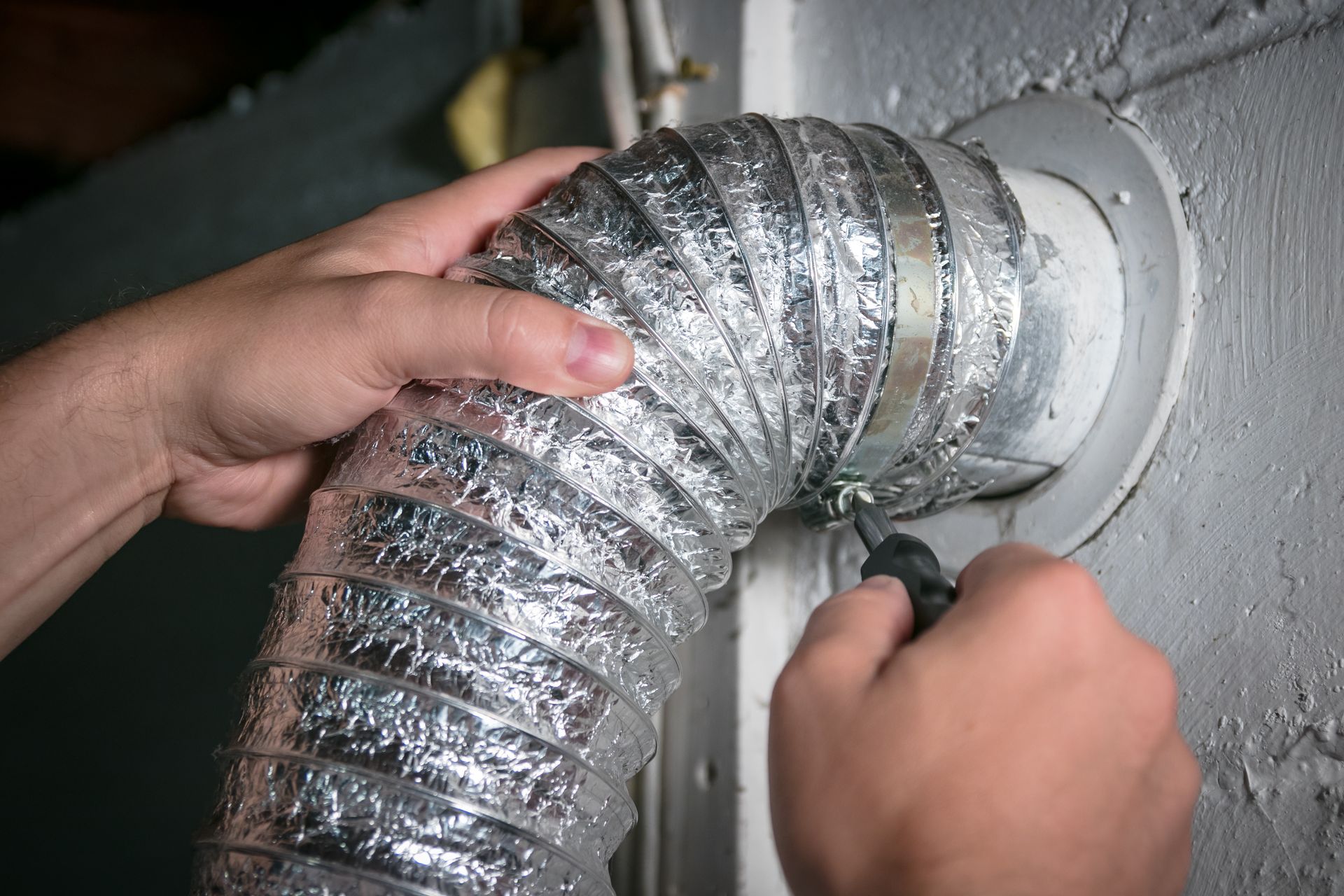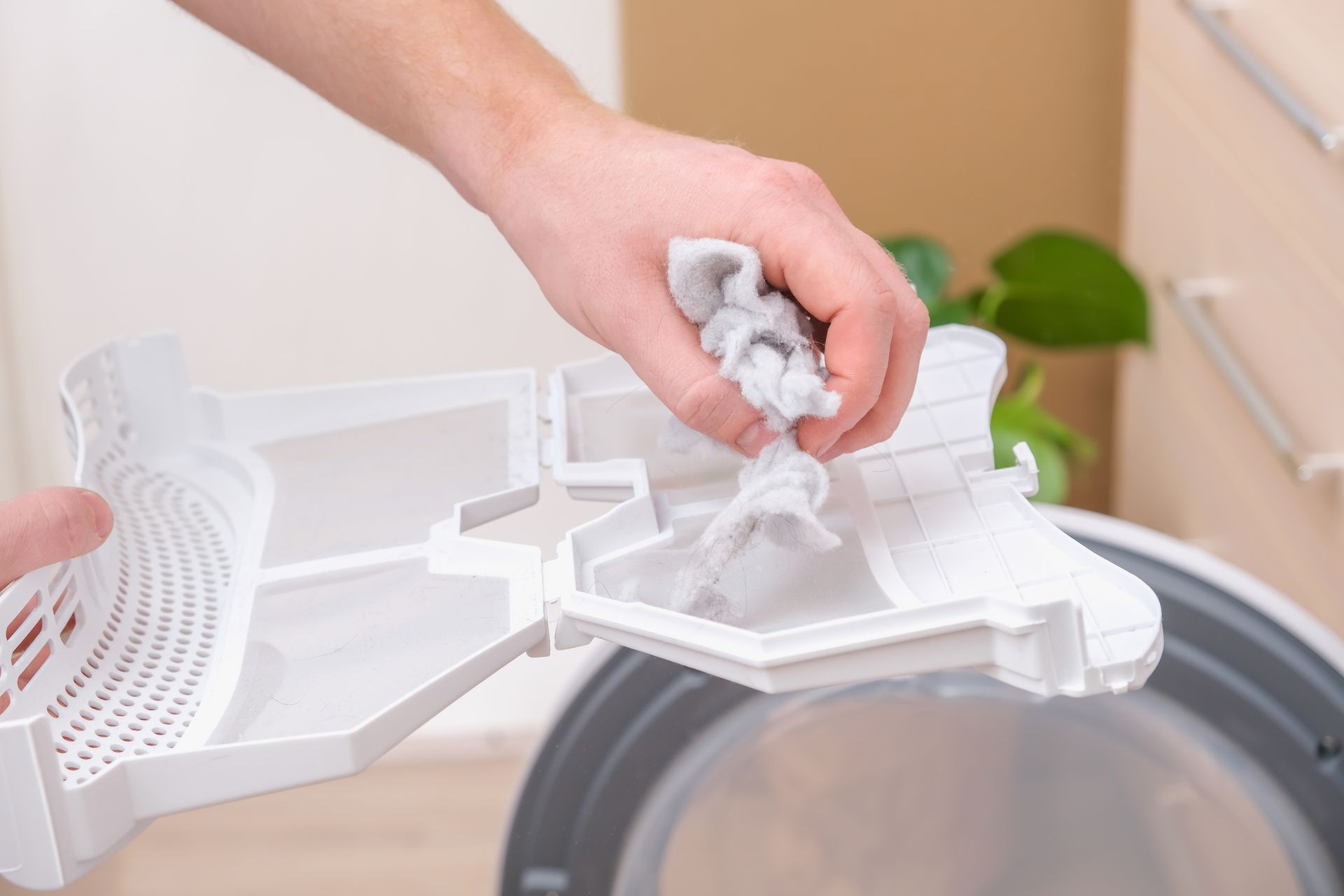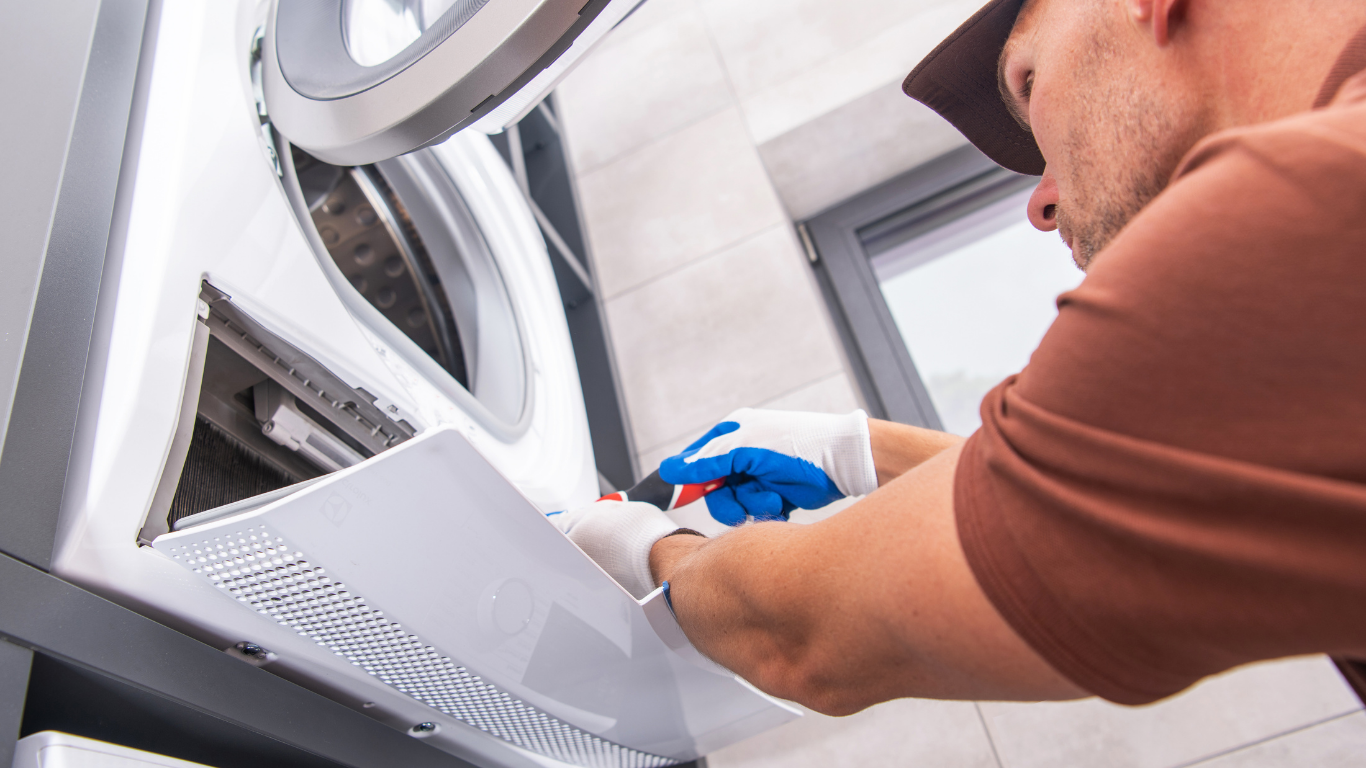What Happens If You Don’t Clean Your Dryer Vent?
What Happens If You Don’t Clean Your Dryer Vent?

Dryer vent cleaning is one of the most important home maintenance tasks—and also one of the most commonly ignored. Many homeowners assume that simply cleaning the lint trap after each load is enough to keep their dryer running safely. Unfortunately, that’s far from the truth.
A lint trap only captures a portion of the lint produced during drying. The rest travels into your dryer vent line—the ductwork that carries hot, moist air outside. Over time, lint, dust, and debris build up inside that vent, restricting airflow and creating serious problems.
If you don’t clean your dryer vent regularly, you may be putting your home, your family, and your appliance at risk. Below, we’ll explore the real consequences of neglecting dryer vent cleaning—and why routine maintenance is essential for every Bay Area home.
1. Fire Risk Increases Significantly
The number one danger of a clogged dryer vent is the potential for a house fire.
According to the
U.S. Fire Administration, thousands of residential fires occur each year due to dryers, with the leading cause being failure to clean the vent system. Lint is one of the most flammable materials in your home. When it accumulates inside a vent, it restricts airflow and traps heat from the dryer. This trapped heat can easily ignite the lint, creating a fire that can spread through walls or attics within minutes.
In fact:
- The average dryer fire causes over
$200 million in property damage annually.
- More than
30% of dryer fires begin in the vent system itself.
Older homes in the Bay Area are especially at risk since they often have longer, less direct vent runs that are more prone to lint buildup. Regular cleaning is the simplest way to protect your home and family from one of the most preventable fire hazards.
2. Drying Time Gets Longer and Longer
One of the earliest signs of a clogged vent is extended drying time. A normal load of laundry should dry in about 35 to 50 minutes. When lint builds up and restricts airflow, the moisture from your clothes can’t escape efficiently. Instead, your dryer ends up circulating warm, damp air.
You might notice:
- Towels or jeans that still feel damp after a full cycle
- A need to run your dryer twice or even three times per load
- Clothes feeling unusually hot at the end of the cycle
This inefficiency doesn’t just waste your time—it also puts stress on your dryer and increases your energy bills significantly.
3. Higher Energy Bills and Wasted Power
A dryer struggling to push air through a clogged vent uses far more energy than necessary. Whether your dryer is gas or electric, it draws additional power or fuel to maintain heat over multiple cycles.
A restricted vent can cause your dryer to consume up to 30% more energy per load. That means your monthly energy bill could increase by $20 to $30—or more—depending on your usage.
In environmentally conscious regions like the Bay Area, where energy costs are among the highest in the nation, wasted electricity and gas from poor dryer efficiency can have a major financial and environmental impact.
4. Dryer Overheating and Internal Damage
When airflow is blocked, the heat inside your dryer has nowhere to go. Over time, this trapped heat causes excessive wear on internal parts, including:
- Heating elements
- Drum seals
- Thermostats
- Motors and bearings
As these parts strain to operate in extreme conditions, your dryer’s overall lifespan decreases dramatically. What might have been a 10-year appliance could fail in half that time.
In some cases, overheating can trigger the thermal fuse—a built-in safety device that shuts off power to prevent fires. Once blown, the fuse must be replaced by a professional, adding to repair costs that could have been avoided with regular cleaning.
5. Moisture Buildup and Mold Problems
Dryers are designed to vent hot, moist air outdoors. When that airflow is restricted, the moisture has nowhere to go. It condenses inside the vent line or in your laundry room, leading to a host of issues:
- Mold and mildew growth in walls or ceilings
- Peeling paint or warped drywall near the dryer area
- Musty odors that linger in your laundry room or clothing
- Rust or corrosion on metal vent components
This problem is particularly common in multi-family homes, apartments, and tight laundry spaces where ventilation is already limited. In humid coastal areas of the Bay—like Daly City, Oakland, and Alameda—the effects of moisture buildup can appear even faster.
6. Increased Risk of Carbon Monoxide Exposure (for Gas Dryers)
For homeowners with gas dryers, a clogged vent poses an additional and potentially deadly risk: carbon monoxide buildup.
When your dryer’s exhaust cannot escape properly, carbon monoxide (CO)—a colorless, odorless, and highly toxic gas—can back up into your home. Prolonged exposure can cause headaches, dizziness, nausea, or even death in severe cases.
Professional dryer vent cleaning ensures that combustion gases are safely expelled outdoors, keeping your family protected from carbon monoxide poisoning. Every Bay Area home with a gas dryer should make vent maintenance a top safety priority.
7. Shorter Dryer Lifespan and More Repairs
Your dryer is built to move a consistent flow of air. When that airflow is blocked, every component—from the heating element to the motor—works harder than designed. Over time, this stress leads to breakdowns and premature failure.
You may start noticing:
- Frequent overheating shutoffs
- Loud or unusual noises
- Dryer drum taking longer to start or stop
- Error codes on digital dryers
Replacing these parts can easily cost hundreds of dollars. In some cases, homeowners end up buying a new dryer altogether—only to face the same problem again if the vent isn’t cleaned.
Routine dryer vent cleaning not only prevents these breakdowns but also helps your appliance perform like new for years longer.
8. Potential Warranty Voids
Many dryer manufacturers, including major brands like Whirlpool, LG, and Samsung, state in their warranty terms that routine maintenance is required. Failing to keep your vent clean can void your warranty.
If a technician determines that a malfunction was caused by restricted airflow or overheating due to lint buildup, the repair may not be covered—leaving you to pay out of pocket. Regular professional cleaning keeps your appliance within warranty and your investment protected.
9. Odors, Allergens, and Poor Indoor Air Quality
Beyond the mechanical and fire risks, dirty dryer vents can also affect your home’s air quality. When air and moisture back up through the system, they can carry:
- Dust
- Mold spores
- Pet hair
- Bacteria and allergens
These contaminants can spread through the laundry area and into your living space. If anyone in your home suffers from allergies, asthma, or respiratory conditions, this can make symptoms worse. A clean vent keeps your laundry room—and the air you breathe—fresh and healthy.
10. It Gets Worse Over Time
The longer a vent goes without cleaning, the more compacted the lint becomes. As airflow continues to weaken, it creates a feedback loop—trapping even more lint. Eventually, the blockage becomes so dense that air can barely pass through.
At that point, you’re likely dealing with:
- Complete system shutdown
- Burnt-out components
- Full vent replacement instead of cleaning
Neglecting this maintenance doesn’t just reduce performance—it multiplies future costs and risks.
Professional Dryer Vent Cleaning in the Bay Area
If you’re in San Jose, Oakland, Walnut Creek, Fremont, Daly City, or anywhere in the Bay Area, The Vent Cleaner provides comprehensive dryer vent cleaning and inspection services for both residential and commercial properties.
Our services include:
- Professional dryer vent cleaning and lint removal
- Dryer vent repair, rerouting, and installation
- Bird guard installation and pest prevention
- Bathroom exhaust and air duct cleaning
- Same-day appointments and 24/7 emergency service
We use specialized tools designed to clean the entire length of the vent line—not just the first few feet. After cleaning, we verify airflow and check for any leaks, disconnections, or damage to ensure your system is safe and efficient.
Frequently Asked Questions
How often should dryer vents be cleaned?
For most homes, once per year is ideal. Larger households or homes with pets, long vent runs, or frequent laundry use may need service every 6 to 9 months.
What are the signs of a clogged dryer vent?
Common warning signs include slow drying times, burning smells, excessive lint around the dryer, and little to no airflow from the outside vent hood.
Can I clean my dryer vent myself?
You can clean the lint trap and possibly part of the vent using DIY kits, but these tools rarely reach deep enough to clear the entire system. Professional cleaning ensures full removal of lint and debris from start to finish.
Is dryer vent cleaning really necessary?
Absolutely. Dryer vent cleaning is one of the most effective ways to prevent fires, lower energy bills, and extend the life of your appliance.
Protect Your Home and Save Money
Skipping dryer vent cleaning might seem harmless in the short term—but the consequences build up quickly. From higher energy costs and costly repairs to dangerous fire and carbon monoxide risks, neglecting this simple maintenance can have serious results.
If it’s been more than a year since your last dryer vent cleaning—or you’ve noticed any of the warning signs—it’s time to schedule professional service.
The Vent Cleaner proudly serves homes and businesses across the Bay Area with reliable, honest, and thorough dryer vent cleaning. We’re available 24/7 and offer same-day service to restore your system’s safety and efficiency.
Call (408) 362-9917 or visit https://www.theventcleaner.com to schedule your dryer vent cleaning today.



